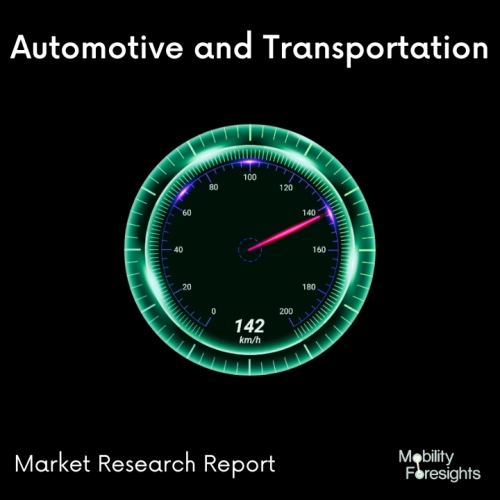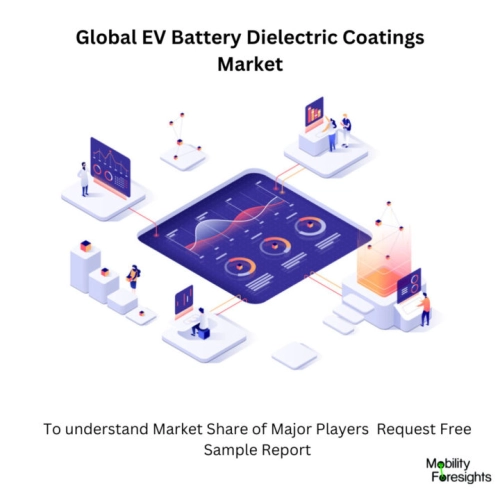
- Get in Touch with Us

Last Updated: Apr 25, 2025 | Study Period: 2024-2030
The powder coating on EV batteries is manufactured specifically for electrical insulation applications and has dielectric insulator qualities.
Thin, layered deposits of non-conductive substances like polymers, ceramics, metal oxides, or comparable substances make up dielectric coatings.
The order of the materials might be extremely complicated and have up to 100 layers. Although there are many different coatings, they can be divided into three groups: architectural, industrial, and special purpose.
Solid Dielectrics, which include Ceramic, Plastic, Mica, and Glass, are five common dielectric materials. Distilled water used as dielectric liquid. Dry air, vacuum, nitrogen, and helium are dielectric gases.

The Global EV battery dielectric coatings market accounted for $XX Billion in 2023 and is anticipated to reach $XX Billion by 2030, registering a CAGR of XX% from 2024 to 2030.
In order to safeguard the battery system and electrical components of a new generation of electric vehicles, AkzoNobel has introduced a new line of Resicoat EV powder coatings (EVs).
The effectiveness of the battery and related systems will determine how well EVs perform in the future. To ensure the efficiency of the vehicle and the safety of the passengers, the battery, however, needs to be protected because its performance is greatly affected by its environment.
By offering insulation from electric current and corrosion prevention, powder coatings can enhance the battery's performance. As a result, battery life can be increased and manufacturers can guarantee greater battery performance over time.
Every single one of the five product categories created for the Resicoat EV line has been specifically innovative to improve the performance and safety of the EVs of the future.
To help safeguard the battery systems, motors, and electrical storage units, they feature better heat management capabilities as well as superior electrical insulating characteristics.
The product line includes Resicoat EVpack, which offers a variety of protective qualities for the battery pack or housing to insulate electrical systems, Resicoat EVcell, which offers exceptional cell to cell electrical insulation for even the most complex designs, and Resicoat EVcooling, which is made to provide superior performance in thermal conductivity, electrical insulation, edge coverage, and consistent film building in cooling tube and cooling plate applications.
| Sl no | Topic |
| 1 | Market Segmentation |
| 2 | Scope of the report |
| 3 | Abbreviations |
| 4 | Research Methodology |
| 5 | Executive Summary |
| 6 | Introduction |
| 7 | Insights from Industry stakeholders |
| 8 | Cost breakdown of Product by sub-components and average profit margin |
| 9 | Disruptive innovation in the Industry |
| 10 | Technology trends in the Industry |
| 11 | Consumer trends in the industry |
| 12 | Recent Production Milestones |
| 13 | Component Manufacturing in US, EU and China |
| 14 | COVID-19 impact on overall market |
| 15 | COVID-19 impact on Production of components |
| 16 | COVID-19 impact on Point of sale |
| 17 | Market Segmentation, Dynamics and Forecast by Geography, 2024-2030 |
| 18 | Market Segmentation, Dynamics and Forecast by Product Type, 2024-2030 |
| 19 | Market Segmentation, Dynamics and Forecast by Application, 2024-2030 |
| 20 | Market Segmentation, Dynamics and Forecast by End use, 2024-2030 |
| 21 | Product installation rate by OEM, 2023 |
| 22 | Incline/Decline in Average B-2-B selling price in past 5 years |
| 23 | Competition from substitute products |
| 24 | Gross margin and average profitability of suppliers |
| 25 | New product development in past 12 months |
| 26 | M&A in past 12 months |
| 27 | Growth strategy of leading players |
| 28 | Market share of vendors, 2023 |
| 29 | Company Profiles |
| 30 | Unmet needs and opportunity for new suppliers |
| 31 | Conclusion |
| 32 | Appendix |